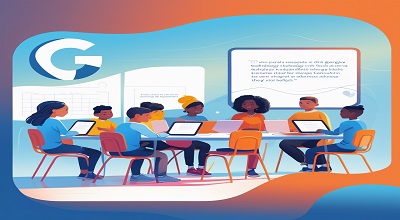Georgia Assistive Technology in Education
Georgia Assistive Technology in Education: Assistive Technology (AT) has become a cornerstone of inclusive education in Georgia, ensuring that students with disabilities receive equitable learning opportunities. From speech-to-text software to adaptive keyboards, AT tools empower students to overcome barriers and participate fully in academic and social activities.
This article explores the latest advancements in Georgia’s assistive technology, providing real-world examples, implementation strategies, and future trends shaping education for students with disabilities.
What is Assistive Technology (AT)?
Assistive Technology (AT) refers to devices, software, or equipment that help individuals with disabilities perform tasks they might otherwise find challenging. In education, AT supports students with:
- Physical disabilities (e.g., mobility aids)
- Learning disabilities (e.g., text-to-speech software)
- Sensory impairments (e.g., screen readers for the visually impaired)
- Communication disorders (e.g., speech-generating devices)
The Individuals with Disabilities Education Act (IDEA) mandates that schools provide AT to eligible students as part of their Individualized Education Programs (IEPs).
Importance of Assistive Technology in Education
AT plays a crucial role in:
- Promoting Inclusion – Ensures students with disabilities learn alongside peers.
- Enhancing Independence – Reduces reliance on teacher assistance.
- Improving Academic Performance – Helps students access curriculum materials effectively.
- Boosting Confidence – Encourages participation in classroom discussions.
Georgia’s Department of Education actively supports AT integration through funding, training, and policy initiatives.
Types of Assistive Technology Used in Georgia Schools
A. Communication Tools
- Augmentative and Alternative Communication (AAC) Devices (e.g., Tobii Dynavox)
- Speech-to-Text Software (e.g., Dragon NaturallySpeaking)
- Text-to-Speech Apps (e.g., NaturalReader, Kurzweil 3000)
B. Mobility and Physical Access Tools
- Adaptive Keyboards & Mice (e.g., oversized keyboards, eye-tracking mice)
- Wheelchair-Accessible Desks
- Switch Devices (for students with limited motor skills)
C. Learning and Cognitive Aids
- Graphic Organizers (e.g., Inspiration Software)
- Audio Books (e.g., Learning Ally)
- Math Assistance Tools (e.g., ModMath for dyscalculia)
D. Sensory Enhancement Tools
- Screen Readers (e.g., JAWS, NVDA)
- Braille Displays
- FM Systems (for hearing-impaired students)
Latest Assistive Technology Trends in Georgia
Recent advancements include:
- AI-Powered Learning Assistants (e.g., ChatGPT for personalized tutoring)
- Virtual Reality (VR) for Special Education (e.g., immersive learning for autism)
- Wearable Assistive Devices (e.g., smart glasses for the visually impaired)
- 3D-Printed Custom Tools (e.g., prosthetic hands for students)
Georgia schools are increasingly adopting cloud-based AT solutions, allowing students to access tools from any device.
Examples of Assistive Technology in Georgia Classrooms
- Gwinnett County Public Schools uses Kurzweil 3000 to support dyslexic students.
- Atlanta Public Schools implement AAC devices for non-verbal students.
- Savannah-Chatham County employs FM systems for hearing-impaired learners.
How Georgia Schools Implement Assistive Technology?
- IEP Team Assessments – Identify student needs.
- Teacher Training – Professional development on AT usage.
- Funding & Grants – Georgia’s Tools for Life Program provides AT resources.
Challenges and Solutions in AT Adoption
| Challenge | Solution |
|---|---|
| High Costs | Seek state/federal grants |
| Lack of Training | Mandatory teacher workshops |
| Device Maintenance | IT support partnerships |
Future of Assistive Technology in Georgia Education
- More AI integration
- Expanded VR applications
- Greater focus on universal design for learning (UDL)
Conclusion
Georgia continues to lead in assistive technology adoption, ensuring all students have access to quality education. With ongoing innovations, the future of AT in schools looks promising.
FAQs
Q1: What is the most commonly used AT in Georgia schools?
A: Text-to-speech software and AAC devices are widely used.
Q2: How can teachers get trained in assistive technology?
A: Georgia offers workshops through Georgia Project for Assistive Technology (GPAT).
Q3: Are there free AT tools available?
A: Yes, tools like Google Read&Write and NVDA screen reader are free.
Q4: Who qualifies for AT in Georgia schools?
A: Students with an IEP or 504 Plan may qualify after an evaluation.
Q5: What is Georgia’s “Tools for Life” program?
A: A state initiative providing AT resources, training, and device loans.
Download Link: Watch Dogs 2 APK
